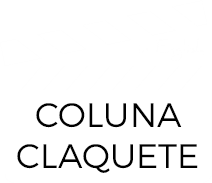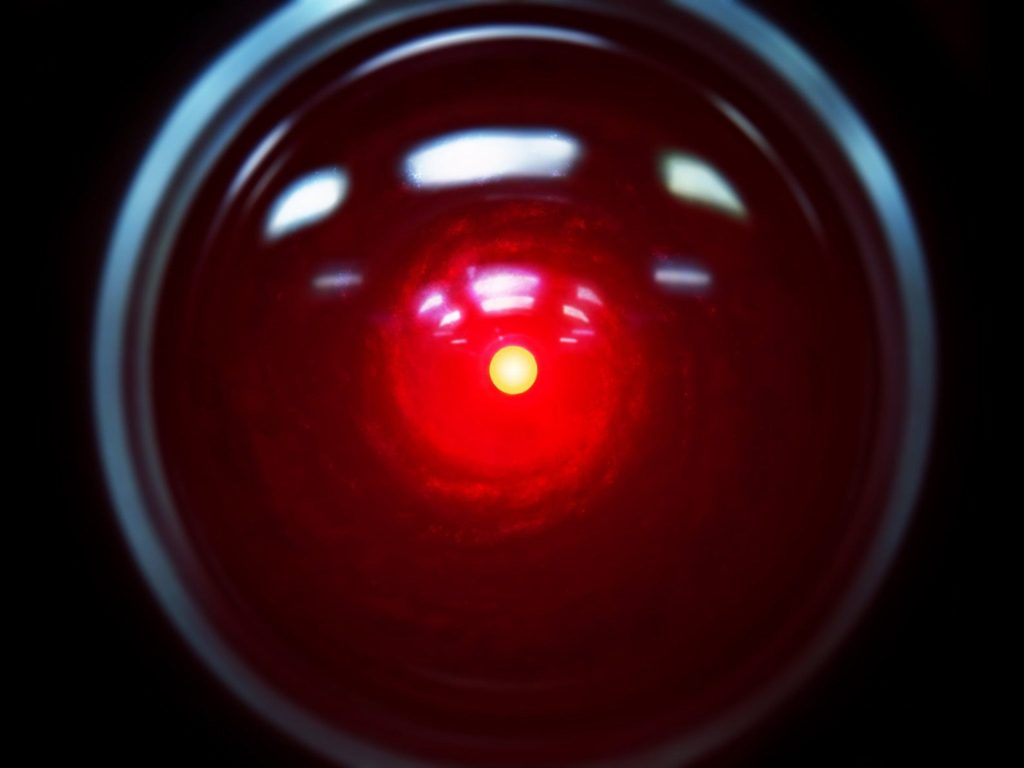Recommended movie: 2001: A Space Odissey
Endless journey
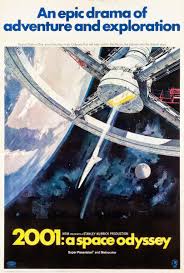 Although it may seem strange that my choice this week is a production of more than half a century, the importance of this sci-fi movie that appears on all the lists of the best films of all time is undeniable. After all, was the union of two geniuses, the writer Arthur C. Clarke and the filmmaker Stanley Kubrick.
Although it may seem strange that my choice this week is a production of more than half a century, the importance of this sci-fi movie that appears on all the lists of the best films of all time is undeniable. After all, was the union of two geniuses, the writer Arthur C. Clarke and the filmmaker Stanley Kubrick.
My relationship with the film “2001: A Space Odyssey” (USA, 1968) began more precisely in 1969. In July of that year, when I was on vacation in Recife, I witnessed the arrival of Man on the Moon and almost watched “2001”. Almost, because my cousin didn’t want to go, and I missed the chance (you still owe me that, cousin).
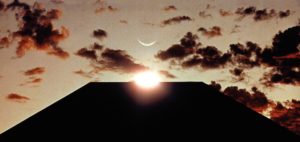 Finally, in 1977, in Rio de Janeiro, I was able to fulfill the desire to watch this movie. When I heard that it was the last day of a Kubrick’s retrospective, I ran to a small cinema in Glória, entered the middle of the session (at the time, was allowed) and stayed for the next (it could too). I found the film very complex, but as I was twenty years and had some familiarity both to science and science fiction, I became a devoted Stanley Kubrick fan.
Finally, in 1977, in Rio de Janeiro, I was able to fulfill the desire to watch this movie. When I heard that it was the last day of a Kubrick’s retrospective, I ran to a small cinema in Glória, entered the middle of the session (at the time, was allowed) and stayed for the next (it could too). I found the film very complex, but as I was twenty years and had some familiarity both to science and science fiction, I became a devoted Stanley Kubrick fan.
Some time later, I was able to read Artur C. Clarke’s book, which, contrary to what is imagined, was not the origin of the movie. As Clarke worked with Kubrick on the script for the film, the book came out sort of in parallel, and explained many things that the movie left understated.
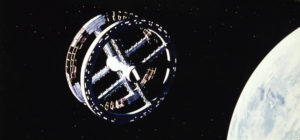 And for those who explain these gaps as script flaws, I would say that it is impossible for a person as perfectionist as Kubrick to leave anything in the final edition that was not intentional. After all, a director who repeats 78 times a scene where someone opens the door and says “hello” until perfection, does not suit the image of one who leaves an incomplete movie – unless it is the intention.
And for those who explain these gaps as script flaws, I would say that it is impossible for a person as perfectionist as Kubrick to leave anything in the final edition that was not intentional. After all, a director who repeats 78 times a scene where someone opens the door and says “hello” until perfection, does not suit the image of one who leaves an incomplete movie – unless it is the intention.
“2001: A Space Odyssey” is a sequence of several time chapters. In the first, long before any shadow of civilization, a group of prehistoric hominids is visited by a strange monolith, who teaches them how to use weapons and eat meat, initiating the domination of the Earth by men.
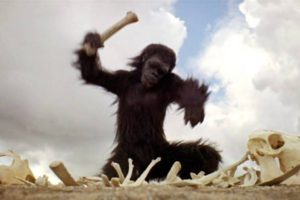 Four million years later, we find a ship making its way from Earth to the Moon, where Dr Heywood Floyd (William Sylvester) goes to investigate a strange monolith that was found buried by unknown – but certainly extraterrestrial – authors. When the sunlight touches the monolith for the first time, a radio wave is generated.
Four million years later, we find a ship making its way from Earth to the Moon, where Dr Heywood Floyd (William Sylvester) goes to investigate a strange monolith that was found buried by unknown – but certainly extraterrestrial – authors. When the sunlight touches the monolith for the first time, a radio wave is generated.
In the next sequence, the gigantic spacecraft Discovery heads towards Jupiter, led by astronauts David Bowman (Keir Dullea) and Frank Poole (Gary Lockwood), who have the help of the computer HAL 9000, the latest in artificial intelligence. However, close to the end goal, HAL comes into conflict with the human crew, killing Frank and three other scientists who were in artificial hibernation.
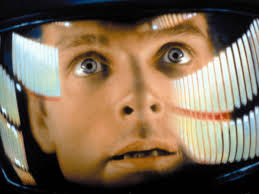 Only then does David discover the real purpose of the mission, which was to discover the recipient of the radio broadcast sent by the Moon monolith. The receiver, a much larger version of the lunar monolith, proves to be a portal that will lead the astronaut on an unimaginable journey. .
Only then does David discover the real purpose of the mission, which was to discover the recipient of the radio broadcast sent by the Moon monolith. The receiver, a much larger version of the lunar monolith, proves to be a portal that will lead the astronaut on an unimaginable journey. .
The film, hermetic and with few explanations, is a dazzle of visual effects, especially if we consider that there was no computer graphics at that time. Everything was done with models, paintings and a lot of intelligence. Fairly, Douglas Trumbull won the Special Effects Oscar, although was also nominated in the categories of Art Direction, Screenplay and Director.
 Interestingly, the first box office results pointed to a total failure. However, at the end of the first month, it was observed that many young people watched the film a lot of times. The word-of-mouth worked more than the marketing of the studios, and the success was consolidated, making it one of the films more revered of all time.
Interestingly, the first box office results pointed to a total failure. However, at the end of the first month, it was observed that many young people watched the film a lot of times. The word-of-mouth worked more than the marketing of the studios, and the success was consolidated, making it one of the films more revered of all time.
The DVD format brought to the new generations the beauty of the movie that VHS couldn’t, and Blu-Ray allowed high definition to pay homage to the beauty of sidereal ballet to the sound of an amazing soundtrack, which runs from Johann Strauss’ “Blue Danube” to the very famous theme “Also sprach Zarathustra”, which is played in the most unlikely places and occasions.
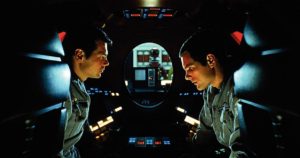 The documentaries contained both in Blu-ray and double DVD editions are: “2001: the making of a myth”, “The prospect of Kubrick: The Legacy of 2001”, “The vision of a future past: the prophecy of 2001”, “2001: A Space Odyssey – A look behind the future “, “What’s in it?”, “2001: FX and the beginning of a conceptual art”, “Look: Stanley Kubrick!” and “Interview with Stanley Kubrick of 11/27/1966 (audio only)”. The film also features audio commentary by Keir Dullea and Gary Lockwood.
The documentaries contained both in Blu-ray and double DVD editions are: “2001: the making of a myth”, “The prospect of Kubrick: The Legacy of 2001”, “The vision of a future past: the prophecy of 2001”, “2001: A Space Odyssey – A look behind the future “, “What’s in it?”, “2001: FX and the beginning of a conceptual art”, “Look: Stanley Kubrick!” and “Interview with Stanley Kubrick of 11/27/1966 (audio only)”. The film also features audio commentary by Keir Dullea and Gary Lockwood.
I recommend everyone to watch this movie, especially if they have access to the documentaries, which provide a complete overview of the time the film was made, the predictions that were not made, and the many surprising successes of Kubrick, a true genius of the movie industry.
